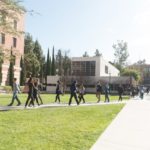By ADRIAN SAINZ
Associated Press
MEMPHIS, Tenn. (AP) _ One of the first exhibits visitors see at the newly renovated National Civil Rights Museum in Memphis displays statues of shackled and branded black men, sitting in a line with knees near their chins, on the deck of a creaking slave ship headed across an ocean.
The powerful, visceral exhibit sets the tone for an evocative, newly immersive museum experience that chronicles the history of the civil rights struggle in America.
The main section of the museum is set to reopen April 5, the day after the 46th anniversary of Martin Luther King Jr.’s assassination in Memphis. King was killed on April 4, 1968, while standing on the balcony of the old Lorraine Motel, which was later converted into the museum in downtown Memphis.
The museum, which first opened in 1991, is now ready to show off new, emotionally hard-hitting exhibits and flashy, informative interactive displays. The museum says it attracts 200,000 people every year, but organizers hope the renovations will attract more visitors.
“The museum will be transformed into an even more compelling presentation of the iconic exhibits, oral histories of lesser-known civil rights foot soldiers and visceral, in-the-moment experiences,” said Beverly Robertson, the museum’s president.
Most of the museum closed for renovation in November 2012, except for some exhibits across the street. The improvements cost about $27.5 million, with the money raised through a fundraising campaign. The museum assembled a group of scholars who not only made sure the information is historically accurate, but also ensured that the most telling details of the civil rights movement were included.
Museum officials said an upgrade of the interior of the building and the exhibits was needed. The result is a gleaming, more spacious lobby and exhibits that require much less standing around and reading. Changes include a new educational center and refurbished gift shop.
The museum retained its most popular exhibits, such as a replica of the bus in Montgomery, Ala., that Rosa Parks rode, complete with a statue of her and the bus driver. But the Montgomery bus boycott exhibit has been upgraded to add strikingly detailed statues of three women walking next to the bus.
Another mainstay is a replica of a sanitation truck in an exhibit about the 1968 sanitation workers’ strike that brought King to Memphis.
New exhibits include a replica of the U.S. courtroom where the U.S. Supreme Court heard the Brown v. Board of Education case in 1954. That ruling made separate-but-equal schools for blacks and whites unconstitutional.
A large March on Washington exhibit shows statues of marchers holding protest signs with the audio of King’s seminal “I Have a Dream Speech” piped in.
There’s even a red phone on which visitors can hear a recording of a conversation between King and then-President Lyndon Johnson.
New interactive displays offer large touch screens that give visitors state-by-state photos, video, text and audio about important protests and key themes of the civil rights movement. There are more than 40 new films and various listening posts, including one where visitors can see and hear Malcolm X during a debate.
“You’re listening to the actual people speak,” tour guide Ziara Smith said of the interactive exhibits and listening posts. “You’re hearing about the movement in their words.”
One display that was not changed was Room 306, where King stayed in his final days. Replicas of the room service cart and an ashtray filled with cigarette butts provide a sense of authenticity to the solemn memorial.
The Memphis museum is not the only one in the country that looks at civil rights or African-American history, or the life of King: There are other prominent sites in Detroit, Atlanta and Birmingham.
But the Memphis museum stands out because it is located on the site where King was killed by James Earl Ray. Visitors standing under the balcony can see the slightly-open window where Ray fired his rifle shot from the boardinghouse across the street. It’s a sobering and chilling experience.
According to King scholar Clayborne Carson of Stanford University, the museum’s renovations present “the best and most recent scholarship on civil rights available today.”











